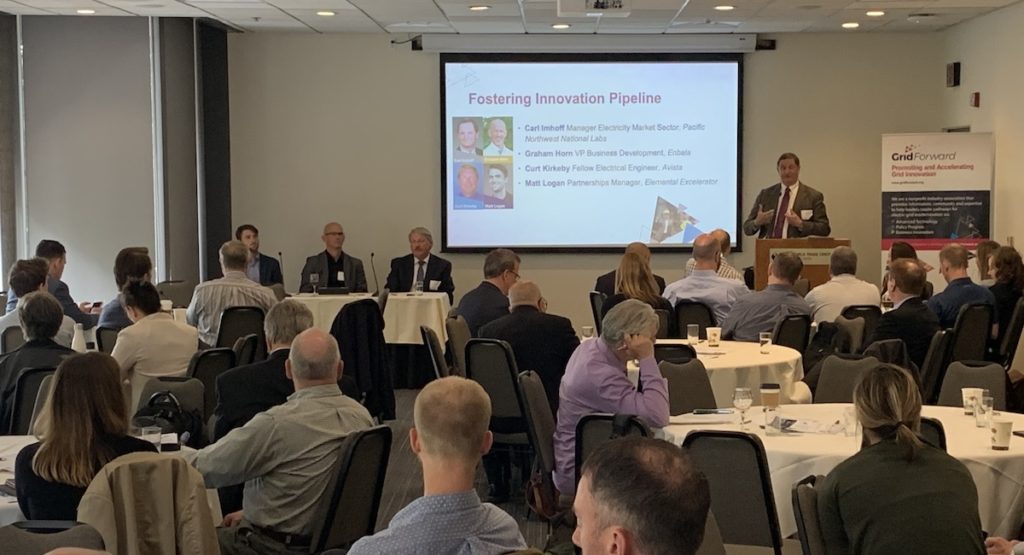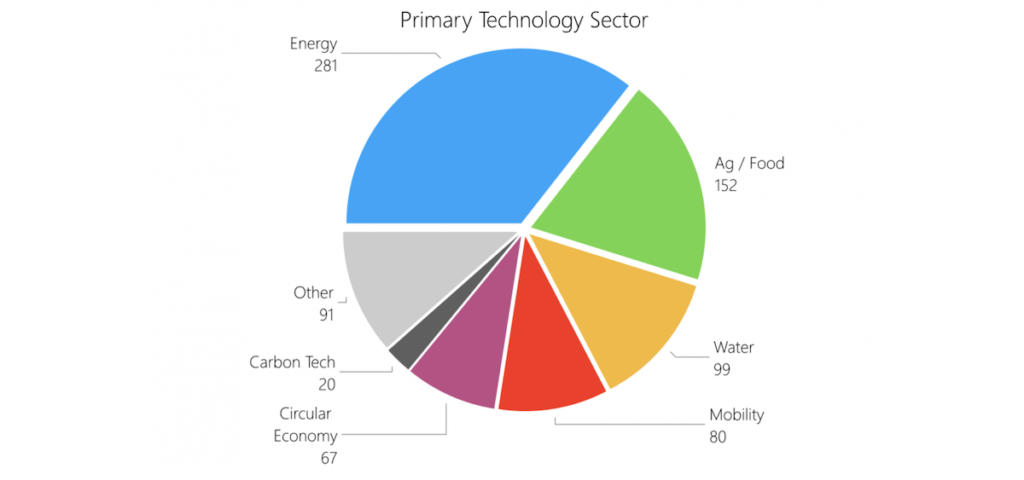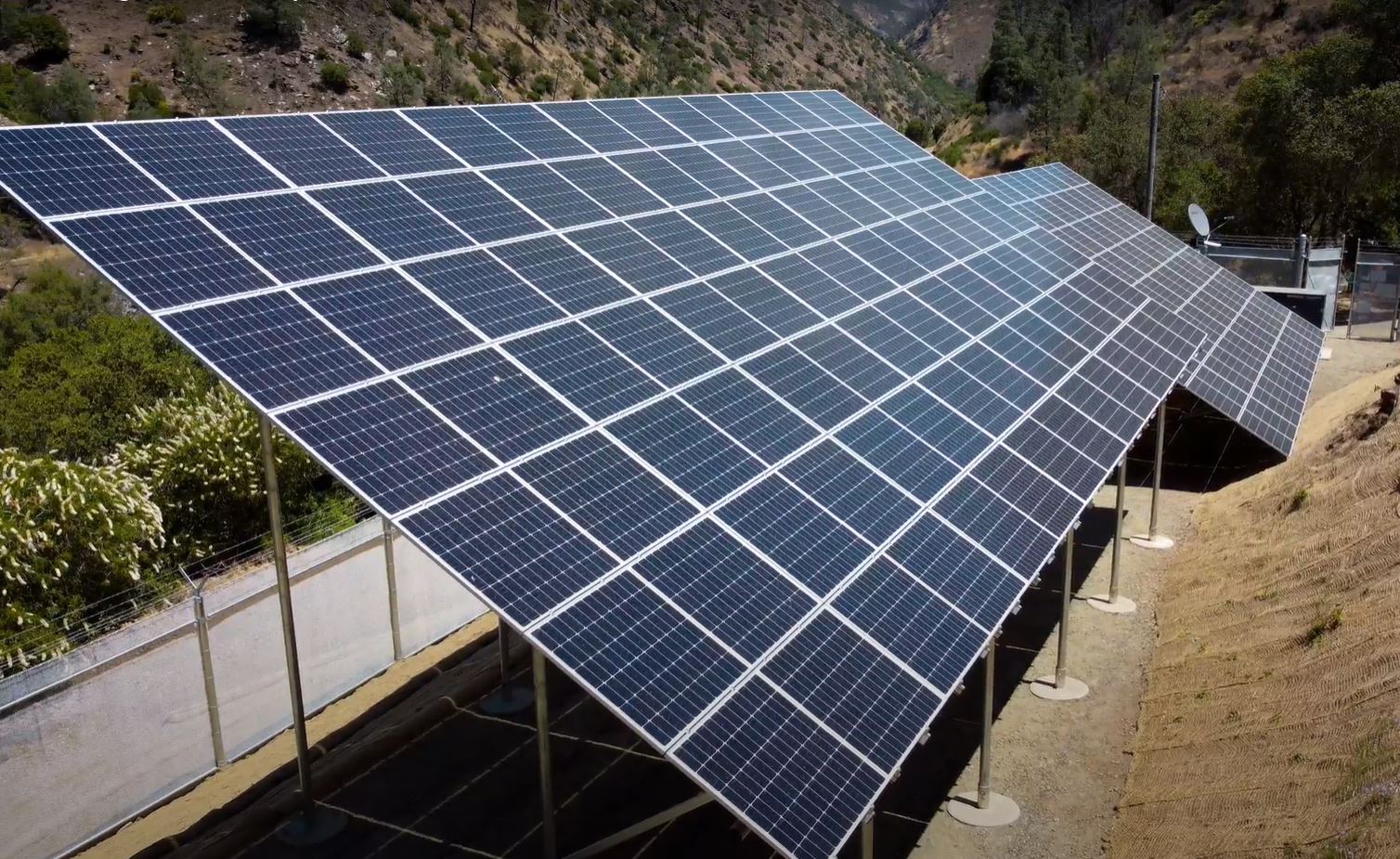By Linda Barney and Lauren Bhaskar
Grid modernization discussions often focus on the promise of new technologies such as analytics or energy storage. But the second session of the Grid Forward Accelerating Grid Innovation Summit proved that technological innovation actually occurs when the technology is supported by transformations in business models and financial approaches, along with establishing key collaborative partnerships.
In the session “Fostering the Innovation Pipeline,” panelists Carl Imhoff (Pacific Northwest National Laboratories – PNNL), Curt Kirkeby (Avista Utilities), Matt Logan, (Elemental Excelerator), and Graham Horn (Enbala) provided a variety of perspectives on how we can accelerate grid modernization. Imhoff introduced exciting strategies and models in development at the Department of Energy (DOE) and national laboratories. Kirkeby described a collaborative group at Avista that brainstorms ideas, which have resulted in a number of innovations. Logan reviewed the grid and energy funding approaches that support a collaborative and open environment at Elemental Excelerator. Finally, Horn provided an overview of Enbala’s R&D process to develop software that drives grid innovation and suggested ideas for building a culture of innovation across vendors.

PNNL Collaborates Through DOE For Grid Modernization
Imhoff is leader of the electricity infrastructure research program within Pacific Northwest National Laboratory in Richland, Wash., and serves as Chair of the Department of Energy’s Grid Modernization Laboratory Consortium, a collaboration of 13 national laboratories supporting DOE’s grid modernization agenda.
He discussed the response of the DOE to the needs of the rapidly evolving electric grid. “About six years ago, DOE realized that the rate of change and the increasing complexity in the power system and its relationship with other energy systems was outpacing the ability of the current business model to keep up and drive the necessary innovation,” he said. DOE has developed an integrated, cross-cutting Grid Modernization Strategy that spans all of the organizations within DOE: the energy efficiency side, the Office of Electricity, the Advanced Research Projects (ARPA-E) group and other programs. Concurrently, the U.S. Congress increased investment in grid modernization.
In addition, DOE dedicated a portion of that increased investment toward the establishment of a new business model for collaboration among national laboratories. “DOE asked the national laboratories to put together all-star teams and work together in areas of high importance and critical outcomes for the nation.” Imhoff also described how PNNL leverages internal R&D investments to expand capacity to deliver innovation to the nation’s energy research agenda. When staffing internal R&D efforts, PNNL teams its most experienced innovators with promising early-career innovators who are going to be future technical leaders. And PNNL seeks to dedicate a significant portion of their time (often up to and exceeding half of their time) to critical outcomes in grid modernization. said Imhoff. “These new approaches to both internal R&D as well as external collaboration across the national lab system, accelerate innovation in the nation’s grid modernization journey,” he said.
Avista Utilities Focus Group Aids Innovation
Curt Kirkeby, a fellow electrical engineer of technology strategy at Avista, described a collaborative group at that utility founded with the mission to drive innovation while focusing on meeting customer needs. Kirkeby stated, “If we’re trying to do something with the customers, shouldn’t we actually be working with the customers and understanding what the customer tensions are and how we as a utility could solve those tensions?” Customer-centric ideas generated from that focus group resulted in Avista collaborating with over 50 area businesses to launch its electric vehicle supply equipment pilot program – resulting in the installation of EV charging stations in 200 locations throughout its service territory.
Other innovations include its community solar program – the largest community solar project in Washington that serves more than 500 residential and commercial customers – and its Solar Select program, dedicated to providing renewable solar energy to large-scale commercial and industrial customers. This strategic focus group drove many technological advances that include 12 patent applications, some of which have been granted around innovations such as self-driving vehicle technology.
Avista builds on a history of innovating through customer-focused collaborations, including its participation and leadership in the Pacific NW Smart Grid Demonstration project – a $178 million project that involved eleven utilities, five technology partners and over 60,000 customers. “I think innovation involves the culture of being challenged to do something that you don’t always do. The Pacific Northwest Smart Grid Demonstration project was a really big project. Many people got to perform work they had never done before. It was exciting and was very successful,” recalled Kirkeby.
Elemental Excelerator Encourages Collaboration and Openness
One barrier to grid innovation is often the lack of funding available to start-up or emerging clean energy companies in the grid modernization space. Elemental Excelerator began as an energy accelerator in Hawaii with the goal of helping that state meet its 100% renewable energy mandate. It has since broadened its scope to assisting start-ups across the cleantech landscape, including energy, transportation, water, agriculture, and the circular economy. The company has provided funding for projects across the clean energy value chain, including utility IT, infrastructure related to renewable generation, storage, and customer-facing solutions.

Matt Logan, Partnerships Manager, explained the extensive reach that Elemental Excelerator has: “Our firm works with companies across three different tracks. The Go-to-Market track is typically for seed stage companies in search of product market fit. We help them through customized coaching around customer discovery, sales and growth, messaging, and operational scale-up. We also work with Series A – C companies in the Demonstration Track. In that track, we fund companies with up to $1 million to deploy in a transformational demonstration project. That can be a new business model, a technology feature expansion, or a geographic expansion. Our third track, the Equity and Access track, funds projects in disadvantaged communities in California, and also helps companies incorporate equity internally through hiring, professional development, and responsible supply chain practices.”
Logan stated, “We encourage startups and utilities to find venues for collaboration. We also challenge our partners to think about how they can have more of an open culture. For example, we recently hosted a Deal Day for our partners to meet some of the strongest companies in our pipeline. We provided a simplified template contract and offered four $10,000 prizes for the first four contracts struck between a startup and corporate partner. We’re constantly seeking to remove friction from the process of innovation for both the startups in our ecosystem and our corporate partners.”
Enbala Software Drives DER Optimization
Enbala works with electric utilities and energy retailers across the US, Australia and Germany. Its core technology, the Enbala Engine, is an advanced software platform that controls and optimizes DER assets in real-time. Graham Horn, Vice President for Business Development, explained that Enbala’s process of innovation is driven by rapidly evolving customer needs and asset types. “Our job is to be very disciplined in terms of how we frame and deliver solutions on behalf of our clients.”
In its work deploying the platform to interface with smart water heaters, electric vehicles or communication systems, the Enbala team always encounters unique challenges in achieving the kind of end-to-end, closed-loop control needed to optimize DER in real time. They recommend budgeting time and working closely with co-vendors and the customer to test and harden each aspect of the end-to end solution. Horn emphasized that the key to this R&D process is building collaborative partnerships: “An important part of what we see in innovation is building the culture of collaboration across vendors. We’ve had the great fortune of working with PGE and collaborating as a software vendor with specific responsibilities. Having a large utility seeking a collaborative multi-vendor solution is a good way to drive innovation because it helps companies like ours work with other good vendors to foster innovation and obtain clear results.”
### Linda Barney is the founder and owner of Barney and Associates, a technical/marketing writing, training and web design firm in Beaverton, OR. Lauren Bhaskar is a member of Grid Forward and an engineer on the distribution modernization team at Burns & McDonnell.



